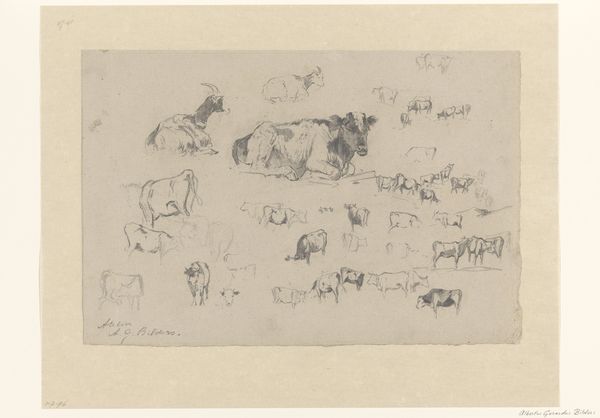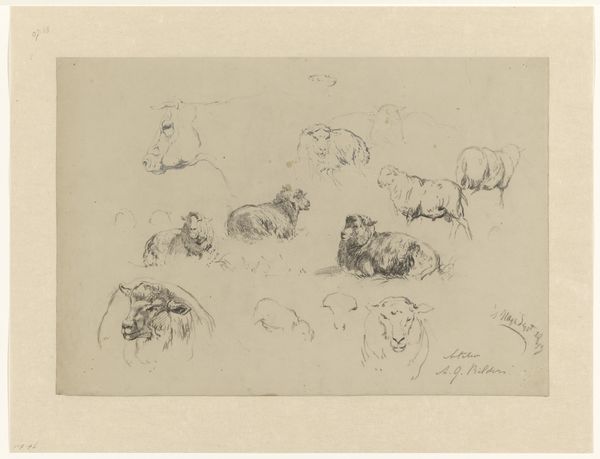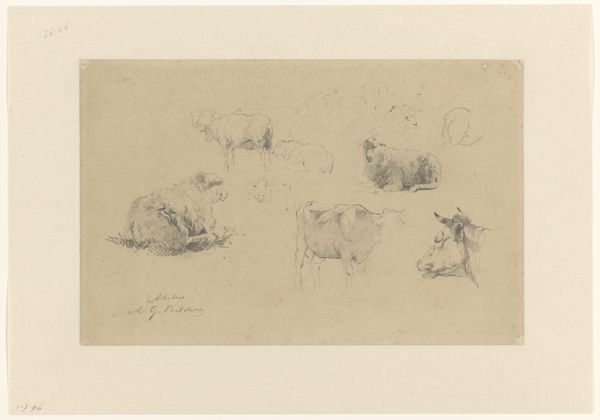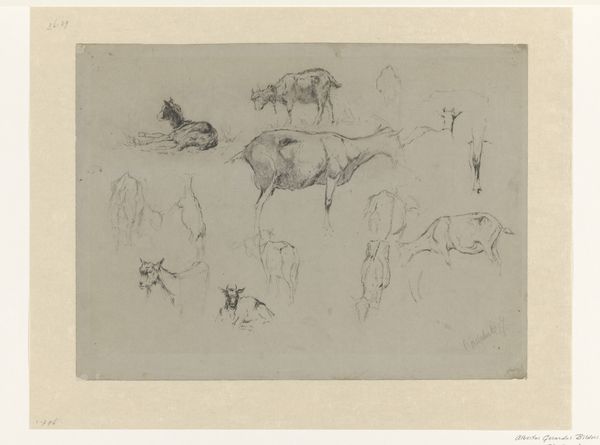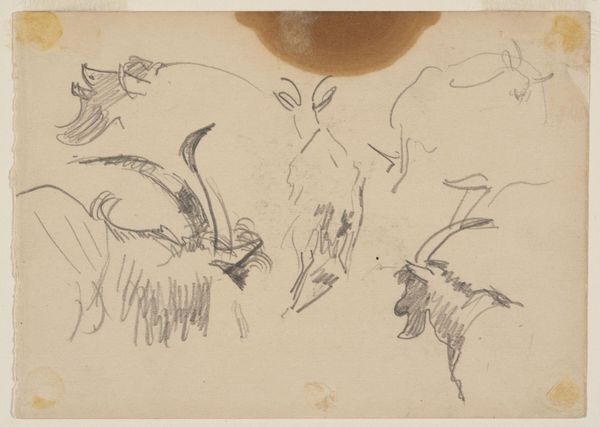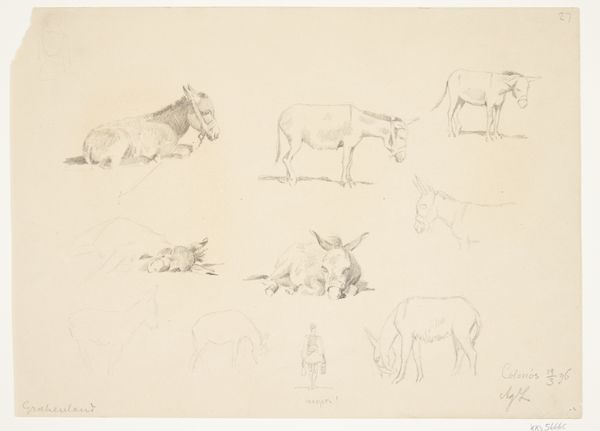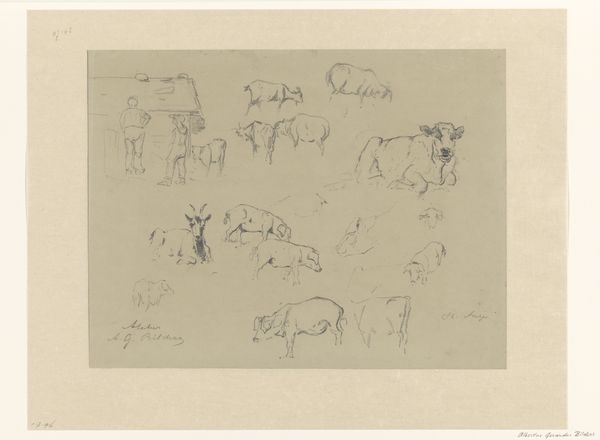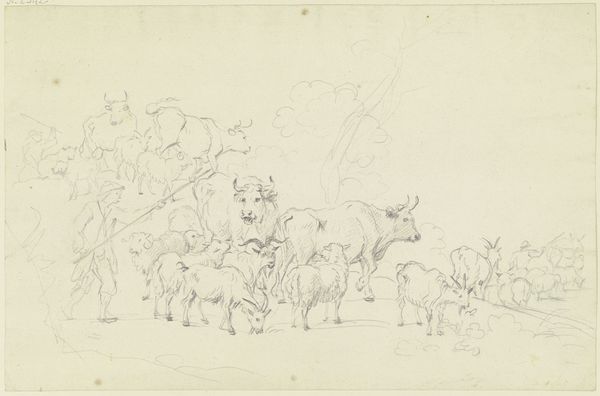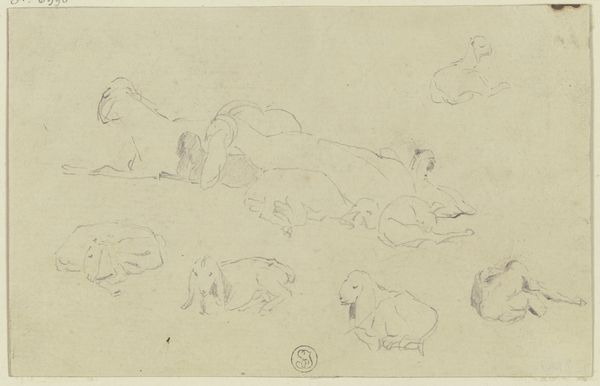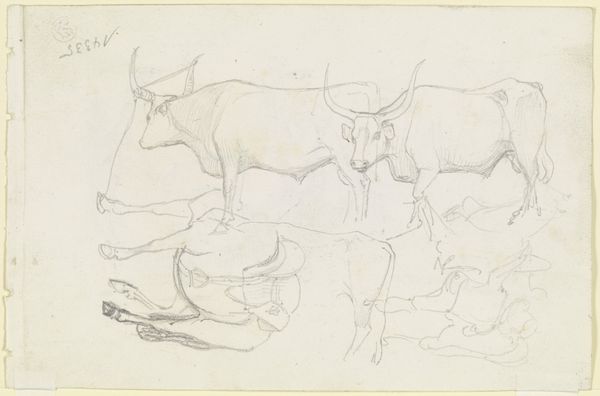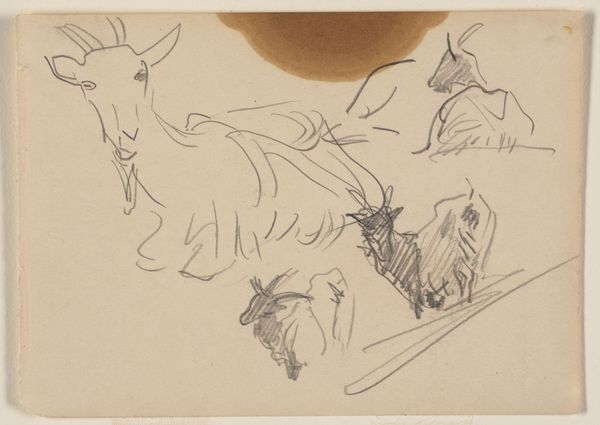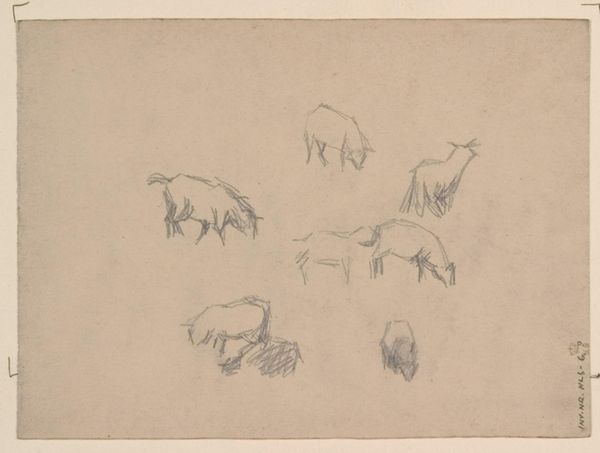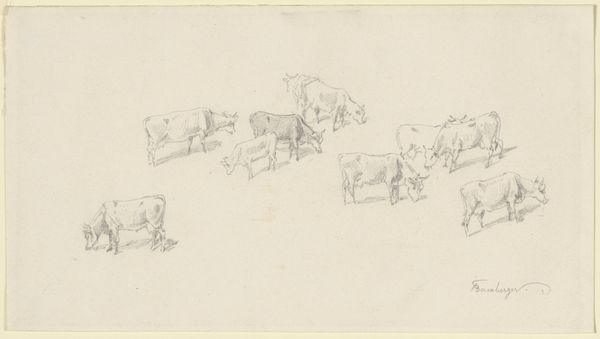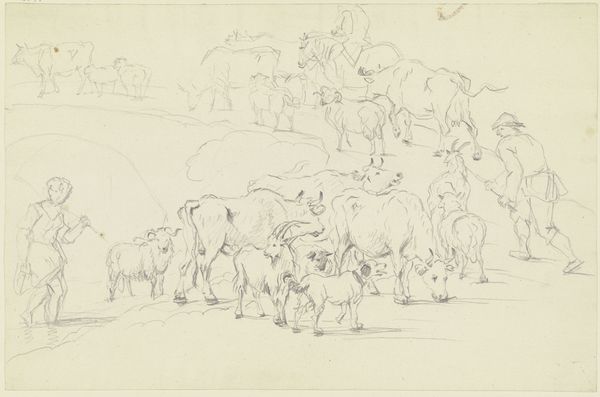
Dimensions: height 387 mm, width 296 mm
Copyright: Rijks Museum: Open Domain
Curator: Alright, let's delve into this sheet of studies currently held here at the Rijksmuseum. It's entitled "Schetsblad met studies van geiten en twee koeien," which translates to "Sheet of Sketches with Studies of Goats and Two Cows." It’s attributed to Gerard Bilders and was likely created sometime between 1848 and 1865. What are your first thoughts? Editor: Immediately, I feel this pastoral sense of calm wash over me. It’s the visual equivalent of a soft moo and a gentle bleat. All these creatures, captured in quick, unassuming strokes... It’s the raw, unvarnished truth of farm life. It feels, I don’t know, like an artist’s personal moment captured. Curator: That sense of immediacy is interesting because, within the context of art history, such sketches were frequently stepping stones toward larger, more formally rendered paintings destined for exhibition or patronage. But Bilders seemed deeply interested in rural scenes. This would place it squarely within the 19th-century Dutch artistic pursuit to create authentically Dutch art—avoiding historical depictions for ordinary scenes. Editor: Authentically Dutch! Now that you mention it, it has this unpretentious charm. I get that “less is more” vibe—sort of like Dutch design sensibilities. He isn't showing off or flexing artistic muscles but just sharing what he sees with unbridled enthusiasm. I mean, look at that cow! Its expression, somehow rendered with just a few lines, speaks volumes. Curator: Absolutely, and you see that repeated in other animal studies here. During the 19th century, these kinds of "genre scenes", particularly those including animals, became very popular with an emerging middle class in the Netherlands. This drawing then would not simply be the creation of one artist in isolation, but related directly to economic and political transformations within the broader culture. Editor: So these quick pen sketches might have met a need for art among the rising middle class, and made artwork affordable as drawing, prints and so on? I get that. It is sort of charming, this work, as well as accessible. What do you feel? Curator: Considering the period and his influences, Bilders and his circle sought to champion artistic simplicity to the broader community that reflected local sensibilities. In Bilders case, the simple beauty in farm life. Editor: Agreed. In a world obsessed with grand statements and complex narratives, this quiet contemplation of cows and goats really speaks to me. A beautiful, simple slice of life!
Comments
No comments
Be the first to comment and join the conversation on the ultimate creative platform.
